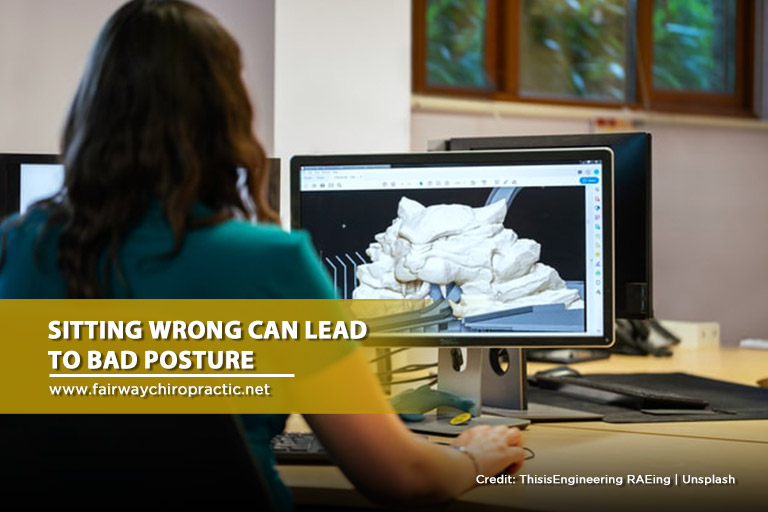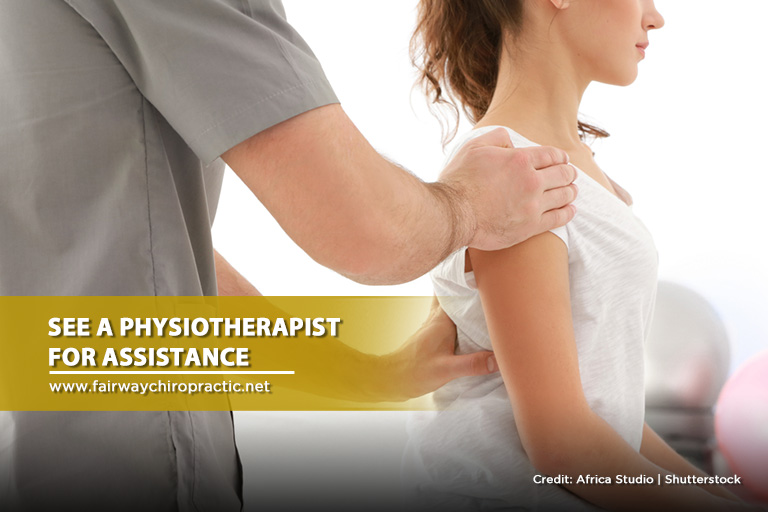The act of sitting is so ingrained in people’s everyday lives that it’s easy to not notice how you sit. Unfortunately, the truth is that sitting for long uninterrupted periods can be dangerous, especially if you have bad posture. It can cause pain and movement dysfunction.
Desk-bound employees who are stuck in their seats the whole day can develop a variety of health conditions. Learn about these health conditions and how to manage them so you can maintain your quality of life.
The Harmful Effects of Bad Posture

If you’re wondering what a perfect posture looks like. It’s when the back forms an S. Usually, we see perfect posture in children as they’re more active, so their movements are more effortless. As we grow older, we tend to develop the worst habits when sitting or standing.
Bad postures create a myriad of issues such as chest pains. It’s best that you are aware of them so you’ll know when you’ve developed the habit and start changing it.
- Round Shoulders
Rounded shoulders are the most typical indicator of poor posture. In this pose, the shoulders are drooping, which can be caused by looking at something for long periods of time. The neck, back, and shoulders are the muscles that are principally responsible for posture regulation. As a result, if these muscles are overworked, our posture will gradually degrade.
- Headaches
Poor posture is a common cause of tension headaches. It usually occurs when the muscles in your neck and jaw are stiff. These headaches are usually resolved when the neck posture is rectified.
- Neck Pain
Because the neck and shoulders are so tightly linked, poor posture can cause neck pain. Neck pain is caused by overuse. Desk-bound employees often spend the majority of their time slumped over their phones and books. The neck muscles are extremely sensitive, and even simple acts like sleeping on the wrong pillow can cause them to become strained.
- Back Pain
When we have bad posture, we don’t always feel the pain that comes with it. It takes time to develop, but it may be treated with a few simple lifestyle adjustments. Unnecessary pressure is exerted on the spine as a result of bad posture. If this problem is not adequately addressed, it will become more complicated over time.
- Shoulder Pain
According to studies, if you maintain appropriate posture, such as keeping your head in line with your neck, your neck and shoulder can support a weight of at least 4.5 kg. The weight is doubled if you tip it forward, such as when you’re leaning towards your phone. Pain radiates from your neck to your shoulders and then to your back as a result of poor posture.
- Muscle Fatigue
Fatigue can be caused by a variety of factors. It could be psychological, mental, or physical in nature. Posture is also a major factor in weariness. The body is well-aligned when a person has good posture, allowing the muscles to operate together. However, if one has poor posture, the muscles wear rapidly due to the additional demands placed on them. People become exhausted as long as they have poor posture because their muscles work harder than they should.
- Low Blood Circulation
Poor circulation is caused by sitting with a faulty posture on a daily basis. Your arteries are constricted because your muscles and joints are tight due to incorrect body alignment. As a result, your heart’s blood supply is constricted, forcing it to work harder than usual.
- Digestive Issues
Bad posture can also have an impact on your gastrointestinal tract. Your internal organs are crushed when you slouch. It causes sluggish digestion and acid reflux.
- Misalignment of the Spine
The spine runs from the top of your head to the bottom of your pelvis. It mostly serves to support your upper body. Bad posture causes your spine to be crooked, which can lead to a variety of additional issues, including difficulties with your other organs. It can take a long time to correct spinal misalignments.
- Disrupted Lung Function
When you breathe, your lungs totally inflate because you’re always seated in the wrong position. Because there is so much abuse of muscles, it wears them down and causes them to fail to function properly. Everything in the body is affected by poor posture. It isn’t simply physically painful. The risk of long-term health problems increases if you have bad posture every day.
The Worst Sitting Positions, Clothes, and Things for Your Posture
Here’s a list of the worst sitting postures for you so you can check yourself and avoid doing these.
- Slouching

The majority of people aren’t even aware that they’re slouched whether they’re sitting or standing. They’ve been doing it for so long that it’s become second nature to them. That’s a horrible one. Your bones and discs are compressed when you slouch and can result in back pain.
- Swayback
The lower back is curved in a swayback position. The pelvis is more tilted than typical, and the lower back curvature is more pronounced. This posture is most commonly seen in pregnant women and persons who are obese, as they tend to bear extra weight in their stomach area.
- Heavy Load on One Side of the Body
Some people carry heavy bags on one shoulder only. The weight of that bag can pull you backward and you end up leaning onto one side or forward to balance your body. This results in your body developing neck, back, or shoulder pain because there is an unnatural position.
- Wearing of High Heels and Tight Clothes
When you wear high heels, your foot extends downward and puts greater pressure on your forefoot. As a result, people who wear high heels must constantly adjust their body position to stay balanced. Over time, it can result in a variety of aches and pains in the feet, legs, back, and waist.
The clothes we wear have a significant impact on our posture. The more restricted our clothing is, the more difficult it is for us to move. We walk, sit, and move differently when our movements are restricted. It causes our muscles to be misused, resulting in muscle soreness and poor posture.
How to Avoid Pain While Being Desk-Bound
- Good Sitting Posture When Sitting in Front of the Computer

People are spending an increasing amount of time in front of computers these days. When you’ve been sitting for a long time, it’s tough to sit comfortably. Here are some pointers to help you sit more comfortably and avoid acquiring terrible posture.
-
- To begin, find a chair that will adequately support your back. Check that your feet are flat on the floor and that your thighs are parallel to the ground.
- Make sure that little items you’ll need, such as telephones and staplers, are easily accessible so you don’t have to exert much effort.
- Make sure your keyboard and mouse are at the same height so you don’t have to reach too far with your arms.
- Staying Active Even While at Work

Being in the office for long periods of time doesn’t mean you should not be moving. Here are some tips for you to keep active while at work.
-
- Walk to and from the bathroom or to and from the copying machine on a regular basis to keep yourself moving.
- Taking pauses from the computer. You can always go to your coworkers’ workstations to get some exercise instead of sending messages or calling them on the phone.
- Standing is a great method to stay active. You can stand for a few minutes and stretch your muscles.
- Taking the stairs rather than the elevator in the mornings allows you to get some exercise.
- Lunch should be taken outside. If the cafeteria is a floor higher, eating out allows you to stroll and stretch your legs, back, and arms.
- Exercises to Alleviate Pain
Exercises aid in the relief of back pain. There are numerous exercise methods available. But, what are some exercises that can help with lower back pain and other issues?
-
- Planking – Planking strengthens your back, chest, shoulders, and abs, allowing you to maintain a neutral lower back while sitting or standing.
- Overhead Press – Shoulder strengthening is aided by overhead presses. These forms of strengthening workouts assist in restoring your body’s natural alignment.
- Glute Bridging – Glute bridging strengthens your upper core. A string glute can keep your pelvis stabilized so your posture remains steady as you’re sitting or standing.
- Squatting – Squats target many of your muscles. One of those is the hip muscles so your spine is more well-supported.
- Runner’s Lunge – Lunges help to improve your back and core muscles. It strengthens these muscles while reducing damage by not putting too much pressure on the spine.
- Rehabilitation

Poor posture is a negative habit that is easy to pick up. Fixing them, on the other hand, necessitates a greater amount of willpower. It also takes more time to repair. Poor posture rehabilitation might take a long time, but even a little effort can help you get back on track.
- Physiotherapy
Physiotherapy has been used to treat a variety of ailments. Physiotherapists can design workout routines for lower back pain and other conditions. Physiotherapy can help you improve your posture by teaching you suitable techniques and providing massage therapy.
- Chiropractic
To attain optimal posture, chiropractors gently adjust your shoulders, neck, and back. They aid in the reduction of muscle and joint tension. You can also have your spine modified to give you added mobility and range of motion. Depending on your present concerns, chiropractic appointments can run anywhere from two to three weeks.
Workers’ health and safety are vital in Ontario and many other places of the world. Fairway Chiropractic Center will assist you if you’re seeking back pain alleviation exercises, massage therapies, or skilled chiropractors to help you improve your posture. Please call us at 519-748-5535 or send an email at admin@fairwaychiropractic.com.











